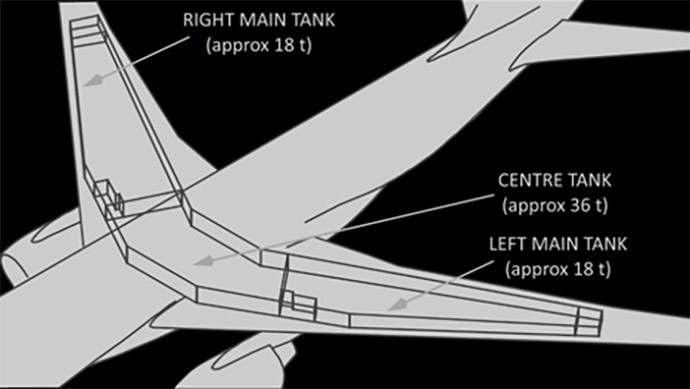
The flight crew of a Boeing 767 freighter did not consult the minimum equipment list (MEL) and continued their departure from Auckland Airport on a scheduled service to Sydney following a fuel configuration advisory alert message as the aircraft approached the departure runway, an ATSB investigation found.
The flight crew, consisting of the captain as pilot monitoring and the first officer as pilot flying, commenced duty at about 9:30 am on 27 July 2017 for a 11:45 am departure. After completion of engine start at 11:40 am, the fuel panel was correctly configured with fuel distributed as 6.6 t and 6.5 t in the left and right main tanks and 7.9 t in the main centre tank.
While taxiing for departure, an imbalance developed in the fuel load between the left and right main tanks while the centre tank was providing fuel to both engines, triggering a fuel configuration EICAS (Engine Indication and Crew Alerting System) advisory alert message just after completion of departure procedures and receipt of clearance to enter the runway.
After determining a fuel leak was not the cause of the imbalance and confirming that the fuel panel was correctly configured the flight crew began the non-normal checklist and decided to continue with the departure and address the fuel imbalance condition in-flight.
Early in the climb the first officer identified the fuel imbalance was the result of abnormal operation of the fuel system, resulting in fuel from the centre tank being distributed to the right tank. Not wanting to trigger another advisory alert the crew decided to delay the fuel rebalancing until the centre tank was empty.
The crew completed the fuel configuration non-normal checklist about 30 minutes after departure, during which time the fuel imbalanced increased past the operator’s fuel imbalance limit. The left and right fuel tanks were successfully re-balanced and remained in balance for the rest of the flight.
On arrival in Sydney, the crew verbally reported the abnormal fuel system behaviour to the dispatch maintenance engineer in Auckland and the maintenance engineer, but it was not entered into the technical fault log.
ATSB Director Transport Safety, Stuart Macleod, said that in making their decision to depart the crew had considered a number of factors including the likelihood of a fuel leak and the low priority of the alert advisory message but had not considered the MEL following the EICAS alert.
“The flight crew had differing knowledge of the MEL requirements following a fuel configuration alert message, and this combined with a shared belief that the risk was low enough for the flight to proceed and having only consulted the non‑normal checklist, led them to believe they were able to depart,” he said.
Mr Macleod said the occurrence highlights the importance of flight crews being fully conversant with all operating procedures, particularly those related to aircraft unserviceability that are critical to the safety of flight operations.
“Had the crew consulted the MEL they would have seen the requirement to return to the gate and seek maintenance action before continuing operations of the aircraft,” he said.
“In addition, delaying the completion of the non-normal checklist resulted in the fuel imbalance increasing to 2.6 t in excess of the operator’s fuel imbalance limitations, unnecessarily elevating the flight’s safety risk.”
The investigation report explains that the fuel imbalance was the result of abnormal fuel system behaviour, probably caused by the malfunction of one of the three fuel system valves, resulting in fuel from the centre tank being fed into the right main tank. Maintenance action was unable to determine to the cause of the malfunction.
Mr Macleod said the investigation also highlighted the importance of any aircraft unserviceability being recorded in the aircraft’s technical log to ensure that it is addressed and to provide future reference in case of further, or related, instances.
“Not entering the abnormal fuel system behaviour in the aircraft’s technical fault log resulted in a delay to maintenance action until after a further two sectors had been flown by the aircraft and probably hampered in the identification of the underlying fault.”
In response to the occurrence, the operator, Tasman Cargo Airlines, has undertaken to amend its MEL to clarify crew actions in the event of an EICAS message between off‑blocks and take-off.
Read the report: Fuel imbalance involving Boeing 767, VH-EXZ, during flight from Auckland, New Zealand to Sydney, New South Wales, on 27 July 2019


